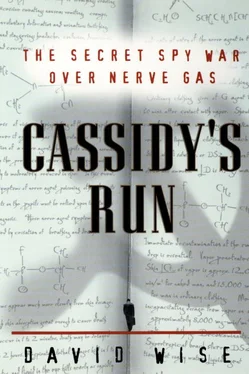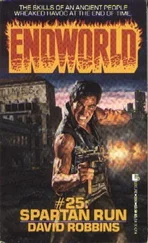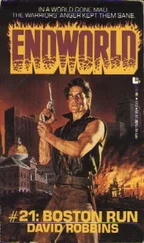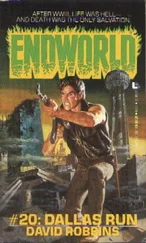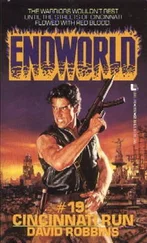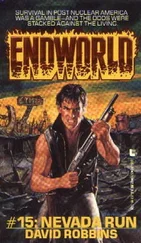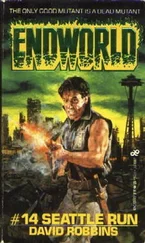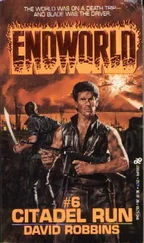Then Danilin explained that “another USSR agent” might clear the drops in Florida. Cassidy agreed to his instructions but grumbled to Danilin about having to come north at Christmas, leaving his wife by herself.
To the FBI, Danilin’s passing mention of “another USSR agent” was important additional evidence that the bureau’s plan was on target: Given the restrictions on travel by Soviet diplomats, the agent almost had to be an illegal.
In the world of espionage, illegals are a prime catch. Because illegals do not operate under diplomatic cover, they can be anywhere—the woman who works in the hair salon down the street, the friendly clerk in the hardware store, or even the neighbor next door. Unless illegals are identified by a defector, they are virtually impossible to find. Their spying usually goes undetected.
Back in Florida, with the help of the FBI, WALLFLOWER drove around St. Petersburg picking out likely drop sites for the GRU. Most were in residential areas or near stores or office buildings, which would make surveillance that much easier for the bureau. In a park or wooded area, it would be difficult for the FBI to get close enough. Cassidy was to explain to the Soviets that the Tampa Bay area was less rural than northern Virginia, compelling him to select sites in more populous places. As instructed, he also bought a 35 mm camera.
Then, in May 1970, he met his new FBI case agent, a tall Irishman from Brooklyn who still retained a trace of his New York accent along with a lot of street smarts. At age thirty-five, John J. O’Flaherty was already a bureau veteran. The two men took to each other immediately, the start of a lifelong friendship.
At six foot two, Jack O’Flaherty was a handsome, impressive-looking man with an athlete’s build. The son of a mounted policeman in New York, he was born in Brooklyn but grew up in the Rockaways in Queens. He went to St. John’s University and joined the police force in 1957, working the four-to-midnight shift and attending law school at St. John’s by day. “A family friend, Mike O’Brien, encouraged me to apply to the FBI and gave me an application,” O’Flaherty said. “From time to time, he needled me, what happened to that application I gave you? So, finally I applied.”
He joined the FBI in March 1961 at age twenty-six, worked as an agent in North Carolina, and was assigned to the Cuban squad in New York, his first taste of foreign counterintelligence work. He married and, after a tour in the San Juan office, arrived in Tampa in August 1968.
On July Fourth weekend 1970, Cassidy drove north to Washington for another meeting with Danilin at their old haunt, the parking lot of the bowling alley in Springfield. The Soviets approved most of the drop sites he had selected, and Danilin accepted Cassidy’s explanation about why the drops were to be in more built-up areas.
Cassidy received a packet of what looked like ordinary lead of the type that is loaded into a mechanical pencil. He was instructed to crush the lead, dissolve it in water, and use the solution to raise the secret writing he would receive from the Soviets. This replaced the earlier method of steaming.
Almost six months later, Cassidy went to Washington again. On the day after Christmas, he picked up three hollow rocks containing two new rollover cameras to use in addition to his 35 mm camera. There were also instructions from Danilin for the first drop in Florida. The message said: “6 Mar. 9:00. Base of bush by large palm tree at Rafael Blvd. and Snell Island Blvd. (south of stop sign).”
After collecting the rocks, Cassidy met with Danilin, and then drove back to Florida, where he turned the rocks over to O’Flaherty. In Tampa, arrangements had to be made to select the classified documents that Cassidy would photograph for the GRU. An ad hoc committee of representatives of the armed services was created at STRICOM to screen the feed before the Joint Chiefs in Washington gave final approval.
Snell Isle, misnamed because it is really a peninsula along Tampa Bay, is a quiet, mostly residential section a mile and a half long and less than a mile wide. Almost half the area is taken up by a private golf course.
With the first pickup by the Russians scheduled for the night of March 6, 1971, O’Flaherty swung into action. He tried to leave nothing to chance in preparing for the moment of contact. There was a two-story condominium directly across the street from the drop site on Snell Isle. O’Flaherty approached Jerry Koontz, a seventy-four-year-old widower who lived on the second floor, overlooking the palm tree. Koontz was a retired sales manager for Sinclair Oil. “He allowed us to use his apartment.”
Also in the line of vision of the drop site, catercorner and a block away, was a building that housed the Tampa Bay Engineering Company. O’Flaherty approached William O’Neill, the firm’s president, and asked if the FBI could take over the building on the night of March 6. O’Flaherty never explained the reason, but he assured the executive, “There won’t be any shooting.” O’Neill agreed.
On the evening of March 6, the stakeout was ready. O’Flaherty waited in the dark in the condo across from the palm tree with his FBI team and a bug-eyed Jerry Koontz, for whom retirement had never been this exciting. “In the front room were two photographers, Fred Webb, who was in charge of the FBI photo lab, and George Austin, and two agents, Joe Hall from the Washington field office, and Larry Doyle from New York. Five of us in the dark, watching.”
The two visiting FBI men were counterintelligence agents, experts at spotting Soviets, in case Danilin or anyone else from Washington dared to risk violating the twenty-five-mile rule. The photographers were looking through a night-vision scope.
Promptly at 9 P.M., Joe Cassidy placed three hollow rocks at the base of the palm tree. Inside were rollover cameras with photos of eleven documents, one stamped TOP SECRET, nine marked SECRET, and one CONFIDENTIAL. The document marked TOP SECRET was entitled “CINPAC Keystone Robin (Charlie) Movement Planning Conference (U) MSG DTG 110338Z DEC 70.”
If all went according to plan, a Russian spy would appear within half an hour. Would he arrive by car? On foot? O’Flaherty had attempted to cover all the bases. “We had an agent with a tie-clasp camera riding the bus line in case the illegal arrived by bus.” Other agents were in the engineering offices as backup, watching from a distance.
Time ticked by as O’Flaherty and the four other FBI men in the condo strained to see any activity around the palm tree, which was nestled against a thick hedge. George Austin was peering through the night scope.
“All of a sudden George says, ‘I see a hand,’” O’Flaherty recalled. “We couldn’t see anything. But through the night scope he could. The individual had come from the opposite side, from behind the palm tree, and reached through the bushes. His fingers were inches from the rock, groping for it, and then he gave up. He comes out from behind the bushes. My first thought is, Is this a professional spy? He has white slacks on. The last thing he should be wearing.” Through the night scope, the photographer could see the man was young, tall, and slender, with dark hair and glasses.
“He comes out front, and the cameras are going. He picks up the rocks and puts them in a bag. And then he walks away, south on Rafael. Now we’ve got a person, and he’s moving in a direction where we did not have anybody.” It was 9:23 P.M.
O’Flaherty silently cursed. The skinny Soviet spy in white slacks was eluding their grasp, and there was nothing they could do about it. Who was he? Had agents been stationed on Rafael Boulevard, they might have been able to get a closer look or a better picture, but it might not be possible to identify the man from the photographs, since he was almost certainly an illegal, an unknown face.
Читать дальше
